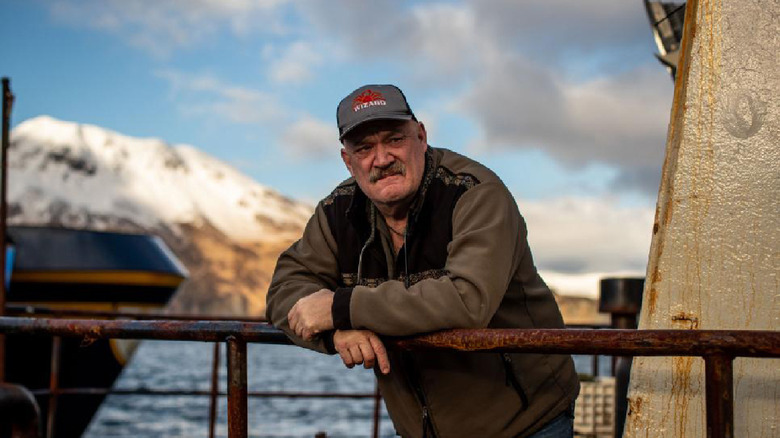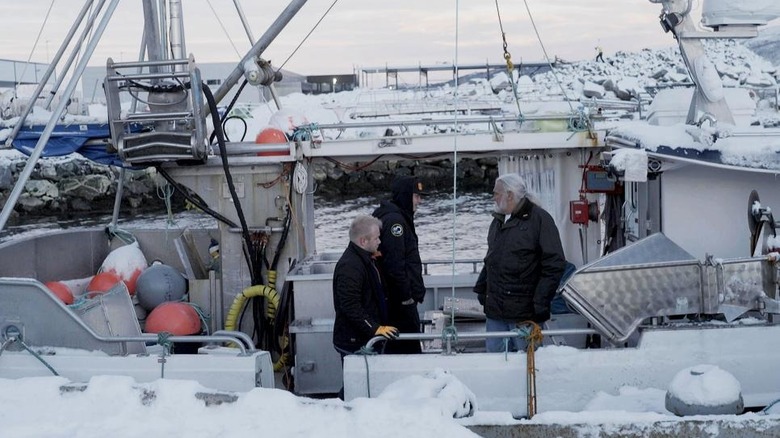Deadliest Catch Has An Impressive Number Of Emmys To Show Off
Discovery's "Deadliest Catch" has chronicled the exploits of crab fishermen in the waters around Alaska since 2005, logging more than 300 episodes in its 19 seasons. While reality shows aren't traditionally known as Emmy darlings, "Deadliest Catch" has hauled in more than its share of the golden statuettes, winning 16 Primetime Emmy awards among its 56 nominations.
The majority of the show's honors have been for cinematography or editing, although it has also earned several nominations for sound mixing and in the category of "Outstanding Unstructured Reality Program," an award it won in 2015. In 2011, "Deadliest Catch" won four Emmys: one for Outstanding Reality Program, and others for Sound Mixing, Cinematography, and Picture Editing in the genre.
The show's venerated editing team sat down for an interview on the podcast Art of the Cut and spoke of the exhaustive team effort that goes into assembling each episode of the show. Editor Joe Mikan said the camera crews in Dutch Harbor, Alaska send back about 25,000 hours of footage each season to Burbank, California, where the editing team sifts through it.
Mikan then described how the editors work to build an episode from the massive amount of video they've received.
"I think what's really cool on an unscripted show like Deadliest Catch is that the editors are involved with crafting the story from the very beginning," Mikan said. "It's like an investigation. You're trying to uncover story from all this material — from the 25,000 hours — and you really need a game plan to go about that. So when we start the episode we need to figure out what the premise is for the overall episode."
Deadliest Catch editors work as a group on each episode
Joe Mikan explained that for a standard one-hour episode, it takes one editor about six weeks to make a first pass through the footage and assemble a rough cut. From there, the episode is usually handed off to editors Rob Butler or Isaiah Camp, who apply the finishing touches. For longer episodes, like season premieres, the editors are each assigned a particular boat.
Butler explained how a group-first approach is a critical element of the show's award-winning editing workflow. "We work as a team," Butler said. "There are seven editors total ... So we're always next to each other, always talking to each other and helping each other out on episodes."
"Some episodes will have five editors credited because everybody will contribute when needed," he concluded.
Executive producer Arom Starr-Paul spoke to Awards Daily about the show's lauded cinematography.
He pointed out that the camera crews face the same perilous conditions as the fishermen and are at sea for weeks at a time. Starr-Paul described how the show's process has evolved over the past 19 years, crediting the show's many awards to the fact that "a lot of the camera guys have been there for years now as well."
"It's just like clockwork now," he said. "The boat is like a ballet. There's a rhythm to it on the deck. You have to be at a certain place at a certain time. Everything's moving. The guys that really know what they're doing can move along with that."

